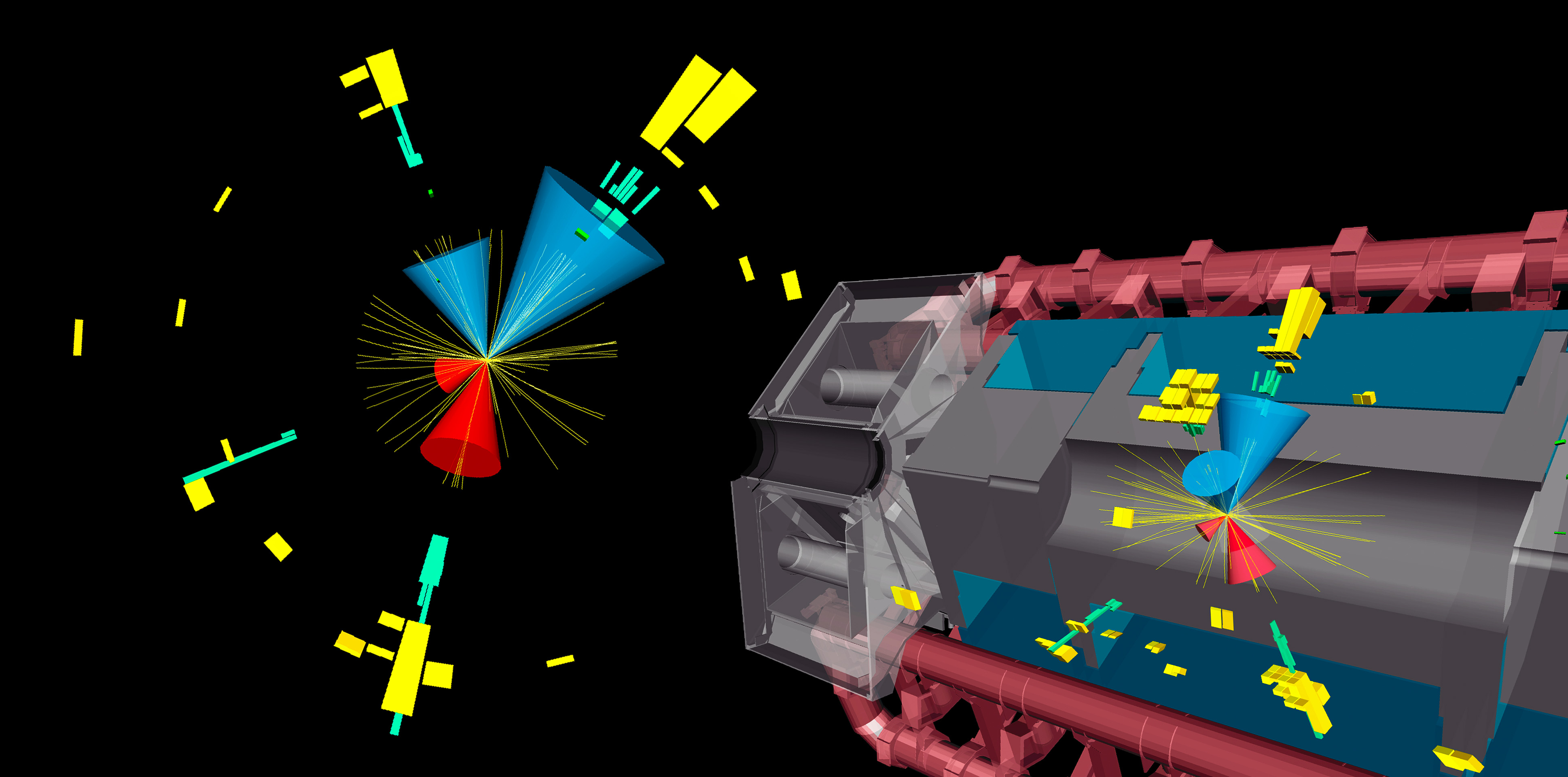Search for elusive “di-Higgs production” reaches new milestone
19 November 2021 | By
Seeing one Higgs boson is already a challenge, but what would it take to spot two at the same time? According to the Standard Model, the Higgs boson can interact with itself, resulting in the simultaneous production of two Higgs bosons ("di-Higgs production"). This is expected to be a very rare process – so rare that, according to the Standard Model, physicists will need around 20 times more data than available today to be able to measure it. This will be possible with the High-Luminosity upgrade of the LHC!

However, physics beyond the Standard Model may enhance the di-Higgs production rate, by altering the strength of the Higgs self-interaction or through an intermediate heavy particle. ATLAS physicists are looking for signs of di-Higgs production in LHC Run-2 data (collected 2015–2018); if spotted early, it would be a clear indication of the existence of new physics phenomena.
As the Higgs boson can decay in many different ways, physicists are searching for di-Higgs events in various decay channels. The latest ATLAS searches look for events where one Higgs boson decays into two bottom quarks, and the other decays into either two bottom quarks (bbbb), two tau leptons (bbττ) or two photons (bbγγ).
Each search has its pros and cons. While bbbb occurs more frequently than bbττ or bbγγ, it can be challenging to separate it from other processes produced in the LHC collisions. Whereas although bbγγ occurs very infrequently, photons are easy to pick out amongst other processes. A happy medium is bbττ, which has a higher production rate than bbγγ and lower background rates than bbbb. However, tau leptons can decay in many ways, making them sometimes tricky to identify.
In a new result presented at the Higgs 2021 conference, ATLAS physicists combined all three of these decay channels, taking advantage of their unique strengths to reach the best limits yet on di-Higgs production. Figure 1 shows the limits on the magnitude of the Higgs self-interaction relative to the Standard Model prediction (described by κλ), which has been constrained to be between –1.0 and 6.6 (the Standard Model value of κλ would give unity).
The new ATLAS result combines three di-Higgs decay channels, taking advantage of their unique strengths to reach the best limits yet on di-Higgs production.
In addition, Figure 2 shows that the observed exclusion upper limits on the signal strength from bbγγ and bbττ lie at 4.3 and 4.6 times the Standard Model prediction individually, though when combined the observed upper limit goes down to 3.1. This is a factor of three improvement with respect to the previous ATLAS results using partial Run-2 dataset, where the 1.5 gain comes from the improved data analysis strategy of the channels.
ATLAS physicists also combined the latest results from bbγγ, bbττ and bbbb to set limits on the production rates of heavy hypothetical particles decaying into Higgs boson pairs (Figure 3). In low mass (mx) regions, the bbγγ channel is the most dominant in the combination; while at higher masses, bbbb is the more dominant channel. By combining all three channels in one analysis, physicists were able to achieve the best sensitivities across a wide range of new-particle masses.
ATLAS physicists are looking forward to adding additional di-Higgs decay channels to their search – using both the current dataset and the coming LHC Run-3 dataset.






